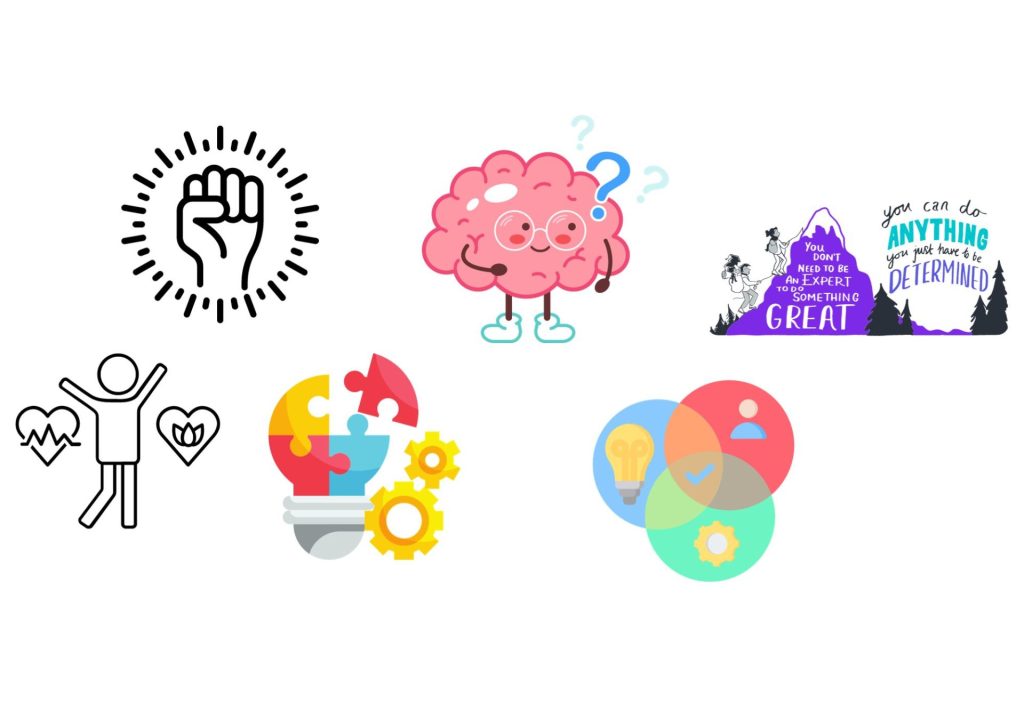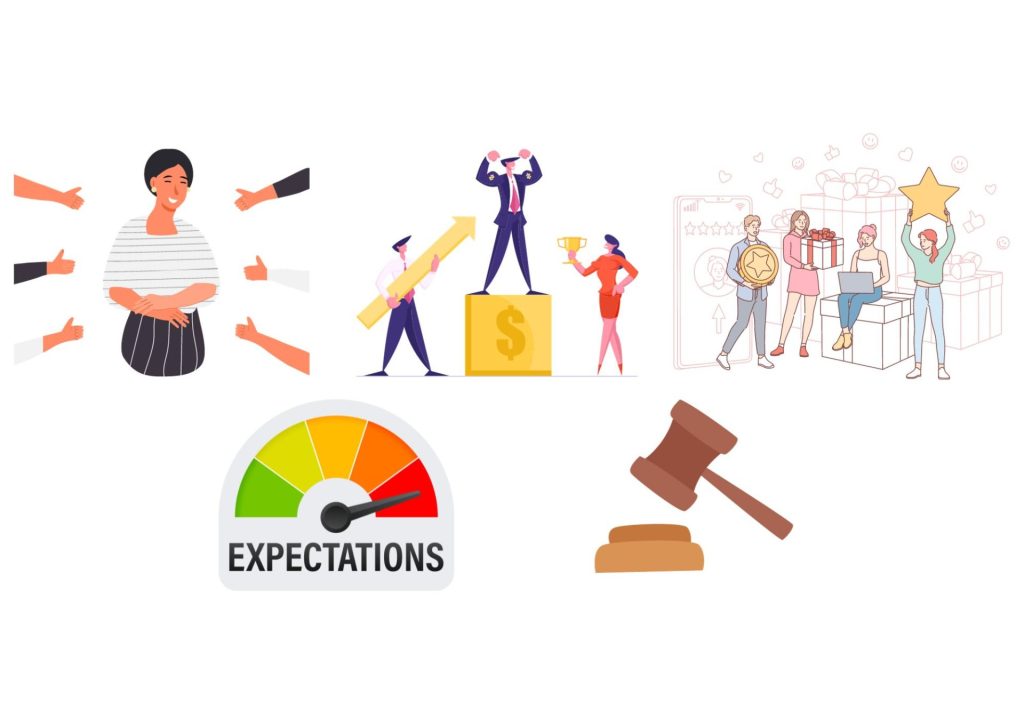Intrinsic & Extrinsic Motivation: Unlocking The Power Within
Intrinsic & Extrinsic Motivation: Unlocking The Power Within
Motivation; is something that pushes us throughout life and plays an important role in our personal development. Motivation can be both intrinsic and extrinsic. These two distinct categories often sculpt the drive behind our actions, interests, sense of purpose and aspirations. Intrinsic motivation navigates us more towards inner fulfillment such as discovering passion and purpose. Whereas, extrinsic motivation navigates us more towards rewards and recognition.
In this article, we will be delving deeper into understanding both intrinsic and extrinsic motivations, their key concepts, and how they are associated with one another.

Intrinsic Motivation
The internal factors that navigate one to engage in a particular behaviour are individuals who are more inclined towards intrinsic motivations and tend to find a sense of fulfilment and happiness in the task or process itself, rather than relying on external rewards. Intrinsic motivations often arise from the genuine urge to explore, learn, or achieve, personal interests or through the search for inner satisfaction. Below are several key concepts of Intrinsic Motivation:
1. Autonomy & Self-Determination.
When we have control over our choices and actions, we are more likely to participate in activities or behaviours that we genuinely want to, not because we are forced to do so by other external factors. This shows that intrinsic motivation is closely associated with self-determination and a sense of autonomy.
2. Personal Satisfaction & Well-Being.
Intrinsic motivation leads one to enjoy a sense of inner satisfaction and well-being. Engaging in acts that align with our interests and values can provide us with a sense of contentment and purpose in life.
3. Curiosity & Interest.
Having a deep interest is one of the heart of intrinsic motivation. When we are naturally passionate or curious about something, we are more likely to participate in it with a driving force of inherent joy.
4. Sustained Effort & Persistence.
When we are driven by passion and personal interest, we are more likely to invest more energy and time needed to accomplish our goals. Thus, intrinsic motivation navigates us towards persistence and sustained efforts in performing the tasks in our hands.
5. Creativity & Problem Solving.
We tend to be more likely to navigate through life obstacles with creative and innovative approaches when we are more intrinsically motivated. This is because both creativity and problem-solving are closely associated with intrinsic motivation.
6. Competence & Mastery.
When we someone who define satisfaction as becoming proficient at something, we also often engage in the activity to fulfil our desire to excel and master a task or skill. This can be one of the powerful intrinsic motivators.

Extrinsic Motivation
External factors like rewards, recognition, or punishments, on the other hand, drive extrinsic motivation. Individuals who are more inclined towards extrinsic motivation often participate in behaviours or activities in which they expect to gain something out of it or to prevent something undesirable. Both these motives of gaining or preventing something are external to the task itself. Below are several key concepts of Extrinsic Motivation.
1. Social Approval & Recognition.
The desire or need to receive accolades or praise can provide some individuals with a sense of belonging that can stem from their extrinsic motivation of needing social approval. These individuals often are motivated by the idea of obtaining social recognition.
2. Tangible Rewards.
Similar to needing to gain social approval, certain individuals engage in certain activities due to the tangible rewards that they may gain. This includes promotions, gifts, incentives, and other materialistic gains.
3. Competition.
On the other hand, some individuals may thrive on challenges due to their competitive spirit, which can be a strong extrinsic motivator for them. They usually aim to outperform others in any task given.
4. External Expectations.
Extrinsic motivation can also be rooted in the need to meet external expectations, such as of society or from others to whom we look upon. Some individuals may participate in certain behaviours or activities as they feel compelled to do so to align with societal norms and expectations.
5. Fear of Punishment.
Fear of punishments or negative consequences can also stem from extrinsic motivation. For instance, an individual may perform tasks or behaviours in a certain manner to prevent themselves from unwanted outcomes, such as punishments or criticisms.

The Association Between Them
In reality, although both intrinsic and extrinsic motivation stem from the need to achieve different purposes, they are not mutually exclusive. Both these motivations often interact and influence one another in different ways. Below are the key concepts of how these motivations associate with each other:
1. Overjustification Effect.
Oftentimes, when extrinsic rewards such as incentives as introduced for activities that were initially intrinsically motivating, it may lead towards a decrease of the intrinsic motivation. This is known as the overjustification effect. For instance, when one starts to receive external gains for tasks that they used to enjoy intrinsically, they may begin to dismiss their intrinsic motivation and start viewing the activity as something that they perform solely for the reward.
2. Optimal Balance.
In most scenarios, associating both types of motivation can be highly beneficial and finding the optimal balance between the both is vital. For instance, employers offering extrinsic rewards such as promotions for achieving certain career milestones can drive employees to maintain their motivation and also allow them to enjoy the intrinsic aspects of their careers.
3. Intrinsic Motivation as Foundation.
To maintain engagement and perseverance, intrinsic motivation often serves as a concrete base. For instance, when one is intrinsically inclined to complete a goal, they are more likely to have sustained efforts while facing challenges and obstacles, although extrinsic gains are absent.
4. External Factors as Catalyst.
To initiate certain behaviours or routines, extrinsic motivation can act as a catalyst. For instance, an external reward may encourage someone to start a new healthy diet routine. Once the individual starts to experience the intrinsic satisfaction of improved fitness and well-being, their motivation may change from extrinsic to intrinsic.
In short, we can conclude that both intrinsic and extrinsic motivation are not two opposing forces, but complementary components that drive us. Intrinsic motivation acts as our inner flame, burning our passion and personal growth. Whereas, extrinsic motivation acts as an external catalyst, offering gains that can navigate us through our very own success pathway. Through the art of balancing both these forces lies the symphony of purpose and achievements.
If you enjoyed reading this, why not broaden the horizon of knowledge by learning about "Disenfranchised Grief"?
You can read the blog here.
For more content related to mental health do follow us on our official Instagram.


